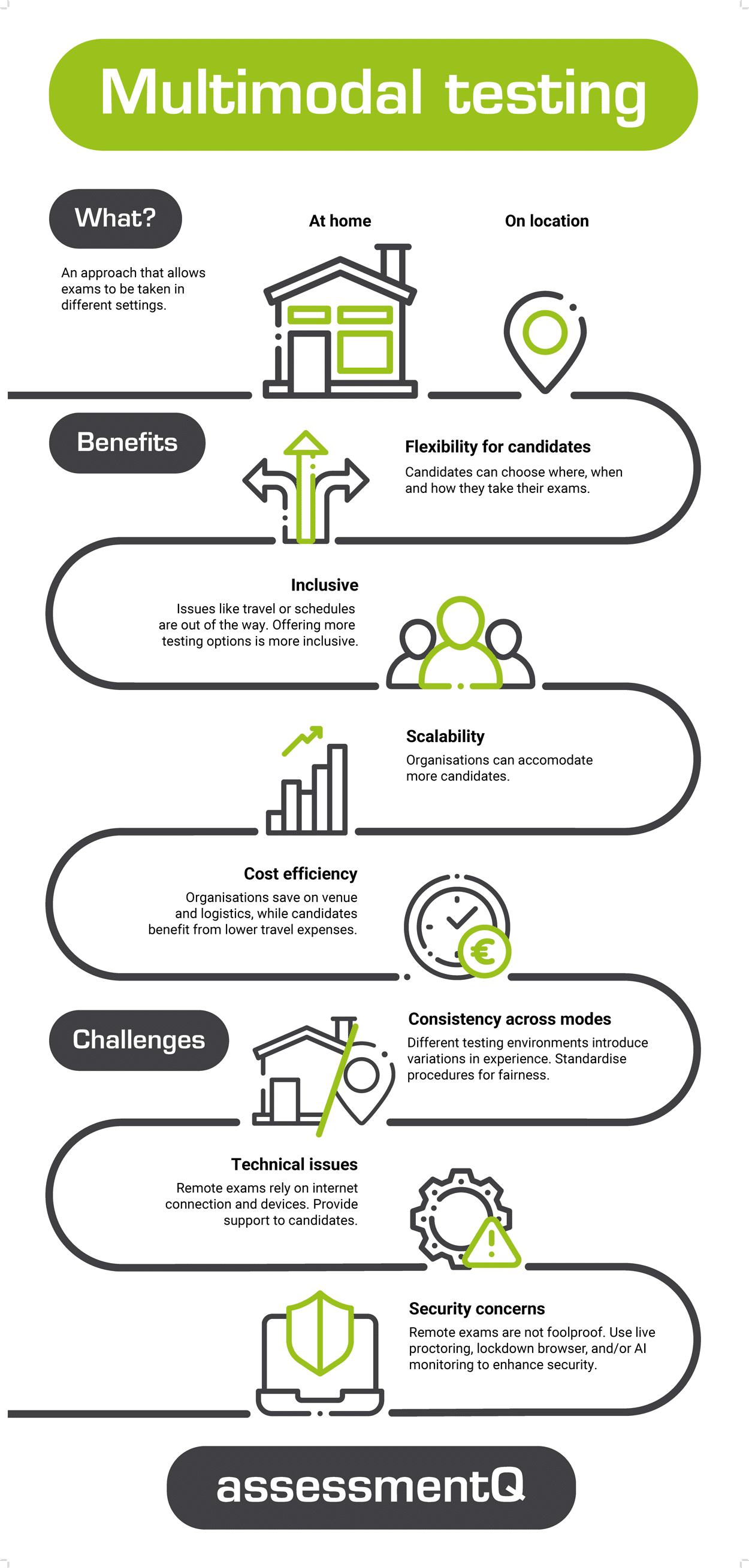
Multimodal testing: take exams from anywhere!
What is one of the best examples of progress in the last decade? That’s right: food delivery! You do not need to leave your house for food or get dressed up to dine at a restaurant. While it is still enjoyable to go out for dinner, having the option to choose is fantastic. So why don’t we have the option to choose to go out or stay in when taking an exam? Well, this is possible with multimodal testing. This blogpost explores multimodal testing, giving you the benefits and challenges.
What is multimodal testing?

Multimodal testing is an approach that allows exams to be taken in different settings-remotely from home or in test centers. Instead of being limited to one location, multimodal testing provides flexibility for candidates and test organisers. This approach ensures accessibility and convenience while maintaining exam integrity.
Technology has made multimodal testing more accessible. Online assessment platforms now support various testing modes, making it easier for organisations to offer exams in a way that suits candidates’ needs.
The candidates can choose when and where they want to take the exams. If they prefer to go to a test center, then that is perfectly possible. But if they live far away and do not want to make the transfer, they can still access the exam from home. To ensure that there is no cheating, exam organisers use online proctoring software. In short, multimodal testing offers both candidates and test organisers a choice.
Benefits of multimodal testing
- Flexibility for candidates
Candidates can choose where and how they take their exams, whether at home, in a test center, or a supervised remote location. This flexibility makes exams more accessible, especially for those with geographical or mobility constraints. - Inclusive
By offering different testing options, organizations can reach a wider audience. Candidates who previously couldn’t take an exam due to travel or scheduling issues can now participate. - Scalability
With multimodal testing, organizations can accommodate more candidates at once. Online and remote testing reduce the need for physical space, making it easier to scale up exams. - Cost efficiency
By reducing the reliance on physical test centers, organizations save on venue and logistics costs. Candidates also benefit from lower travel expenses and greater scheduling flexibility.

Challenges of multimodal testing
- Consistency across modes
Different testing environments may introduce variations in experience. It’s important to standardize procedures to ensure fairness. - Technical issues
Remote exams rely on stable internet connections and compatible devices. Organisations must provide support to candidates facing technical difficulties. - Security concerns
While remote proctoring helps deter cheating, it’s not foolproof. Using live proctors, AI monitoring, and/or lockdown browsers can help enhance security.
Extra tip
To be able to organise multimodal testing, you need an e-assessment platform where you can schedule one exam both with and without proctoring. Not all platforms offer this flexibility, but assessmentQ does. With our platform, you can schedule proctored and non-proctored exams, making multimodal testing possible. assessmentQ integrates with Mereos, offering a secure environment for digital exams.
Conclusion
Multimodal testing offers a flexible, scalable, and secure approach to assessments. While challenges exist—such as ensuring fairness and managing security risks—the benefits outweigh the drawbacks. By combining different testing modes, organisations can create accessible and effective assessments that meet the needs of a diverse candidate pool.


